purrr approach
We can use a combination of nest and map_dbl for this:
library(tidyverse)
df %>%
rowwise %>%
nest(-blob) %>%
mutate(s = map_dbl(data, FUN)) %>%
unnest
Let's break that down a little bit. First, rowwise allows us to apply each subsequent function to support arbitrary complex operations that need to be applied to each row.
Next, nest will create a new column that is a list of our data to be fed into FUN (the beauty of tibbles vs data.frames!). Since we are applying this rowwise, each row contains a single-row tibble of exclude:D.
Finally, we use map_dbl to map our FUN to each of these tibbles. map_dbl is used over the family of other map_* functions since our intended output is numeric (i.e. double).
unnest returns our tibble into the more standard structure.
purrrlyr approach
While purrrlyr may not be as 'popular' as its parents dplyr and purrr, its by_row function has some utility here.
In your above example, we would use your data frame df and user-defined function FUN in the following way:
df %>%
by_row(..f = FUN, .to = "s", .collate = "cols")
That's it! Giving you:
# tibble [3 x 6]
exclude B C D blob s
<chr> <dbl> <dbl> <dbl> <chr> <dbl>
1 B 1 3 1 fd 4
2 B 0 4 1 fs 5
3 D 0 9 0 sa 9
Admittedly, the syntax is a little strange, but here's how it breaks down:
..f = the function to apply to each row.to = the name of the output column, in this case s.collate = the way the results should be collated, by list, row, or column. Since FUN only has a single output, we would be fine to use either "cols" or "rows"
See here for more information on using purrrlyr...
Performance
Forewarning, while I like the functionality of by_row, it's not always the best approach for performance! purrr is more intuitive, but also at a rather large speed loss. See the following microbenchmark test:
library(microbenchmark)
mbm <- microbenchmark(
purrr.test = df %>% rowwise %>% nest(-blob) %>%
mutate(s = map_dbl(data, FUN)) %>% unnest,
purrrlyr.test = df %>% by_row(..f = FUN, .to = "s", .collate = "cols"),
rowwise.test = df %>%
rowwise %>%
do({
result = as_tibble(.)
result$s = FUN(result)
result
}),
group_by.test = df %>%
group_by(1:n()) %>%
do({
result = as_tibble(.)
result$s = FUN(result)
result
}),
sapply.test = {df$s <- sapply(1:nrow(df), function(x) FUN(df[x,]))},
times = 1000
)
autoplot(mbm)

You can see that the purrrlyr approach is faster than the approach of using a combination of do with rowwise or group_by(1:n()) (see @konvas answer), and rather on par with the sapply approach. However, the package is admittedly not the most intuitive. The standard purrr approach seems to be the slowest, but also perhaps easier to work with. Different user-defined functions may change the speed order.
